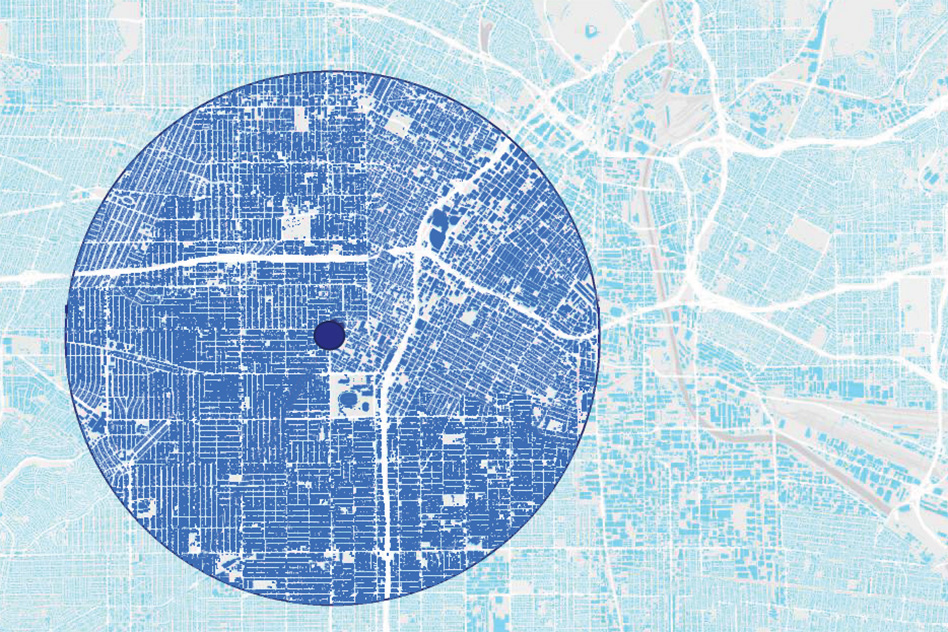Gridlike cities retain more heat

Some cities, such as New York and Chicago, are laid out on a precise grid like the atoms in a crystal, while others, such as Boston and London, are arranged more chaotically, like those in liquid or glass. Researchers have found that the “crystalline” cities are more dramatic “heat islands”: they experience far greater buildup of heat compared with their surroundings than the “glasslike” ones.
For decades, researchers have known that urban building materials such as concrete and asphalt can absorb heat during the day and radiate it back at night, leaving cities hotter than surrounding areas covered with vegetation. This effect is often quite dramatic, contributing as much as 15 °F to nighttime temperatures in places such as Phoenix, Arizona. The consequences can include more health problems and higher energy use during hot weather.
The researchers, led by MIT senior research scientist Roland Pellenq, took formulas initially devised to describe how individual atoms in a material are affected by forces from the other atoms and adapted them to yield simplified statistical descriptions of the way buildings are situated in relation to each other. They applied those formulas to patterns of buildings determined from satellite images of 43 cities in the US and other countries, generating for each city a single index number—the “local order parameter”—between 0 (total disorder) and 1 (perfect crystalline structure). The cities’ index scores ranged from 0.5 to 0.9—and this correlated directly with observed temperature differences between the cities and nearby rural areas. The “crystalline” cities, those with higher scores, had more pronounced heat-island effects.
The differences seem to result from the way buildings re-radiate heat that can then be reabsorbed by other buildings facing them directly, the team determined.
“If you’re planning a new section of Phoenix,” Pellenq says, “you don’t want to build on a grid, since it’s already a very hot place. But somewhere in Canada, a mayor may say No, we’ll choose to use the grid, to keep the city warmer.”
Keep Reading
Most Popular
Large language models can do jaw-dropping things. But nobody knows exactly why.
And that's a problem. Figuring it out is one of the biggest scientific puzzles of our time and a crucial step towards controlling more powerful future models.
The problem with plug-in hybrids? Their drivers.
Plug-in hybrids are often sold as a transition to EVs, but new data from Europe shows we’re still underestimating the emissions they produce.
Google DeepMind’s new generative model makes Super Mario–like games from scratch
Genie learns how to control games by watching hours and hours of video. It could help train next-gen robots too.
How scientists traced a mysterious covid case back to six toilets
When wastewater surveillance turns into a hunt for a single infected individual, the ethics get tricky.
Stay connected
Get the latest updates from
MIT Technology Review
Discover special offers, top stories, upcoming events, and more.